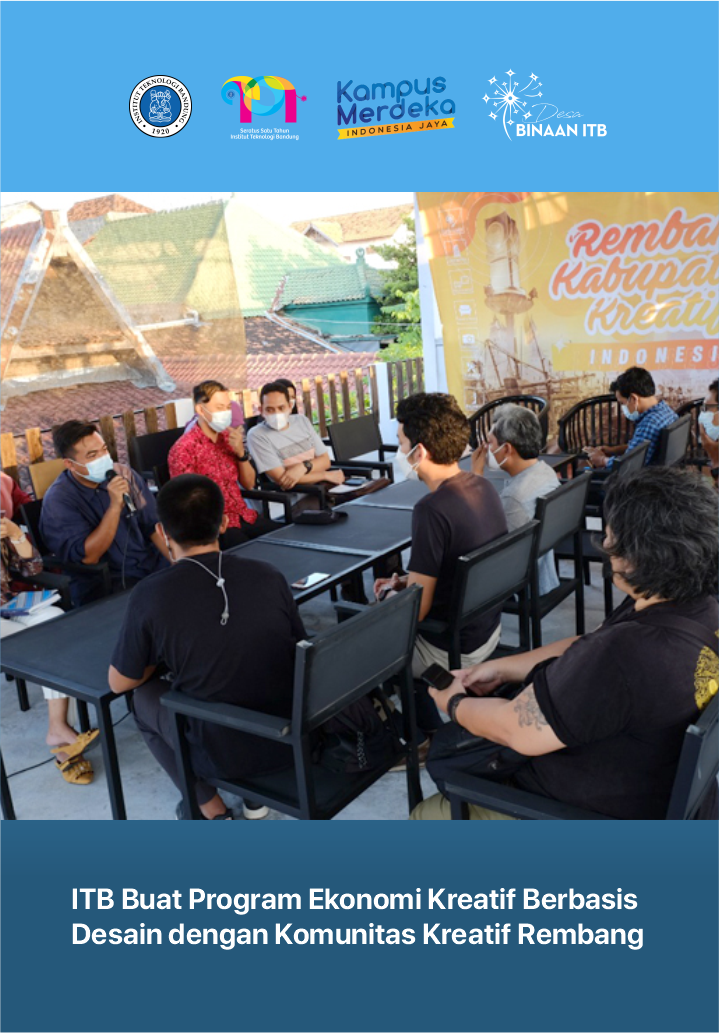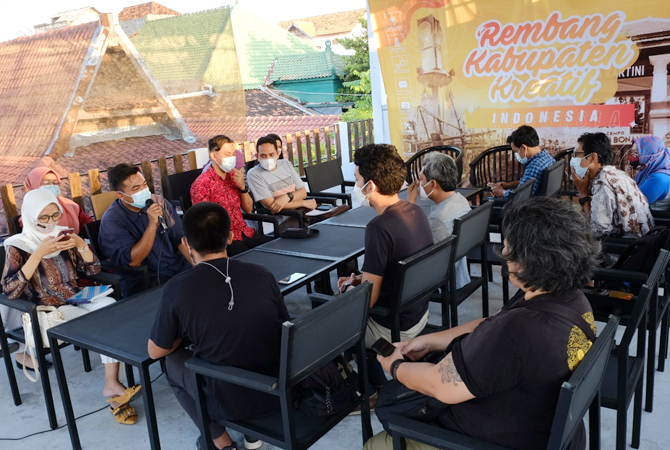

Community Service Team, Faculty of Art and Design (FSRD) ITB consisting of Dr. Dwinita Larasati, M.Sn., Dr. Arianti Ayu Puspita, M.Ds., Meirina Triharini Ph.D., Prananda L. Lazy Ph.D., and Raditya A. Taepoer, M.Ds. in collaboration with the Rembang Creative City Network (RCCN) to develop a creative economy program. This activity began with a series of online workshops in the form of drafting a design-based creative economy road in Rembang Regency.
In addition to RCCN, the ITB team collaborated with the Rembang Regional Apparatus Organization (OPD) to activate the Kartini Museum as an effort to restore the tourism sector and the creative economy in Rembang Regency.
This two-day online workshop was attended by several representatives of the creative community in Rembang and several representatives of the Rembang OPD. Such as the Ministry of Communication & Informatics, the Regional Development Planning Agency, the Youth & Sports Education Office, and the Culture and Tourism Office.
According to the head of RCCN, Ahdiat Galih, the participants of this workshop were from several communities and OPDs. "The hope is that communication can be established. In addition, the needs that have been needed so far can begin to be fulfilled. However, of course the goal is towards a better Rembang," he said, quoted from Jawapos.com.
The Kartini Museum did not escape the discussion target during the online workshop. As a cultural asset owned by Rembang, of course the revitalization of the Kartini Museum is a hot topic to discuss.
Dr. Dwinita Larasati explained that in several places in developed countries, museums can be attractive tourist destinations. "In a country with a more established industry, the museum is not only a place for knowledge, but can also be used to hang out. So you don't always see the object/artifact because you've seen it before, so just hang out at the café or usually at the souvenir shop,” he said.
It is hoped that from the results of the discussion at this workshop, the community can make Rembang a center for creative economic activities, both in terms of revitalizing its cultural design, and in terms of marketing that is packaged more contemporary. This, of course, requires collaboration between the government, the creative community, MSMEs, and the community.
Editor: Ali Hasan Asyari
